Seat belts reduce serious crash-related injuries and deaths by about half, according to the National Highway Traffic Safety Administration. The simple act of wearing a seat belt is the single most effective way to reduce the risk of fatality in a crash. So why do millions of people not buckle up on every trip? Let’s debunk five common myths about wearing seat belts that are outdated or just plain wrong.
5 Common Misconceptions About Seatbelts
#1: Seat belts are uncomfortable and restrict my movement.
Wearing a seat belt should not cause any discomfort or pressure when adjusted properly. Seat belts have come a long way in the comfort department since becoming a mandatory feature in cars in the 1960s. Technological advancements like polyester webbing and pretensioners, which eliminate slack in the event of a crash, have made seat belts more comfortable for the wearer. If you want to customize your fit, you can find clips and extenders at your local dealer or auto parts store.
With children, the shoulder belt should fit across the shoulder and chest, and the vehicle lap belt should fit across the upper thighs. (Children are typically between the ages of 8 and 12 years old when they are ready for a seat belt. A good test is if their knees bend at the edge of the seat when backs and bottoms are pressed against the vehicle seat back.)
Pregnant women should wear both the lap belt and the shoulder strap, ensuring a snug fit. Lap belts should be buckled under the belly and over hips. Never place the lap belt across your belly. The shoulder strap should go between the breasts and off to the side of the belly. Never place the shoulder strap under the arm.
#2: Seat belts trap you in your vehicle during a crash.
This myth is often associated with fire- and water-related accidents, which account for less than one-half of one percent of all crashes. More importantly, seat belts can actually prevent you from being knocked unconscious, which can increase your chances of escaping during an accident.
#3: I’m just going up the block for groceries. I don’t need to wear a seat belt around town.
Think again. Routine, seemingly low-key trips can be deceptively dangerous. Did you know that most traffic-related deaths happen within 25 miles from your house and at speeds less than 40 mph, according to the National Highway Traffic Safety Administration? Don’t take any chances. Your life and the lives of your passengers are at stake.
#4: I don’t have time to put on my seat belt.
It only takes about three seconds to strap on your seat belt. That’s less time than it takes to tie your shoe. Even if you’re buckling up 20 times a day, that’s only one minute of your day.
#5: My car has air bags, so I don’t need to wear a seat belt.
Air bags are designed to protect a buckled passenger, not an unbuckled one. Seat belts secure you in the proper position to benefit from an air bag deployment. If you’re not wearing your seat belt, you’re in danger of sliding underneath the air bag, colliding with the dashboard or windshield, or being ejected from the front seat. Air bags are a supplemental form of protection and most are designed to deploy in moderate-to-severe frontal crashes, which doesn’t cover all situations. Using air bags in conjunction with seat belts is your best bet.
The History Of Seatbelts
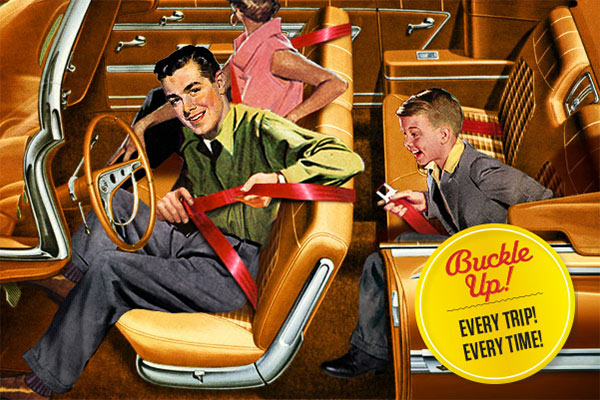 Forget statistics, campaigns or pleas from car manufacturers. As the history of the seatbelt shows, the most effective way to get drivers and passengers to buckle up is to hit them where it hurts: in their wallets.
Forget statistics, campaigns or pleas from car manufacturers. As the history of the seatbelt shows, the most effective way to get drivers and passengers to buckle up is to hit them where it hurts: in their wallets.
Although lap belts were offered in cars as early as the 1950s, they were snubbed by many until 1984, when New York became the first state to crack down on car safety. “The thing that started to get people to buckle up in large numbers was simply having state laws with a minimal fine of $25 or $50 for not buckling up,” says Mike Ciccone, senior director of crashworthiness evaluations at Insurance Institute for Highway Safety (IIHS).
The importance of using seatbelts is no joke. No other quick daily habit—not even eating your veggies—has such life-changing benefits. “Lap and shoulder belts are about
50 percent effective in preventing fatal injuries to front‐seat occupants in crashes of all kinds,” says Ciccone. The numbers are staggering: Safety belts saved 12,802 lives in 2014, according to the National Highway Traffic Safety Administration (NHTSA). Compare that with the early 1980s, when just roughly 11 percent of front-seat passengers wore belts. So when did people buckle down on buckling up? Here, a look back at the invention, technology and laws behind seatbelts.
1885: The U.S. Patent Office issues the first seatbelt patent.
1949-50: Nash Motors Company offers lap belts in certain car models.
1959: Volvo engineer Nils Bohlin invents the first three-point safety belt in Sweden by combining the lap belt and shoulder strap into one continuous belt that could be buckled with one hand. The invention’s open patent allows other manufacturers to adopt the game-changing design.
1968: The first federal law regarding seatbelts—called the Federal Motor Vehicle Safety Standards—is passed, requiring all new cars sold in the U.S. to feature lap or shoulder belts in the front seats and lap belts in the back seats.
1984: New York passes the first “primary enforcement law,” in which a police officer can pull over and ticket a driver just for not wearing a seatbelt. Thirty-four states now have primary enforcement laws, while 15 states have secondary laws, which means drivers pulled over for another reason can receive a ticket for not wearing a seatbelt. The fear of getting ticketed led to a quick jump in seatbelt usage for those states, which meant fewer deaths and injuries. People pay more attention to primary laws, and buckle up more. According to IIHS, if all states with secondary laws had primary laws instead, their passenger deaths would decrease by 7 percent.
1993: North Carolina’s “Click It or Ticket” campaign, which involved TV ads and billboards highlighting the cost of getting pulled over, dramatically increases seatbelt use from
65 percent to 81 percent. A decade later, the “Click It or Ticket” campaign goes national.
2015: States with primary enforcement laws report seatbelt usage at 91 percent, and states with secondary enforcement laws (or no law at all) report seatbelt usage at 79 percent.
Living in such a rapidly changing world, it’s easy to take innovations for granted, but remember that seatbelts were designed with one goal in mind: to protect you. Don’t forget to buckle up on your next ride—and that goes for everyone, especially kids and even pets.
You always buckle up … right? Good. GEICO offers discounts to good drivers. See how much you could save.
Next article: 5 Common Driving Myths Debunked
By Stephanie Levis and Kara Cutruzzula



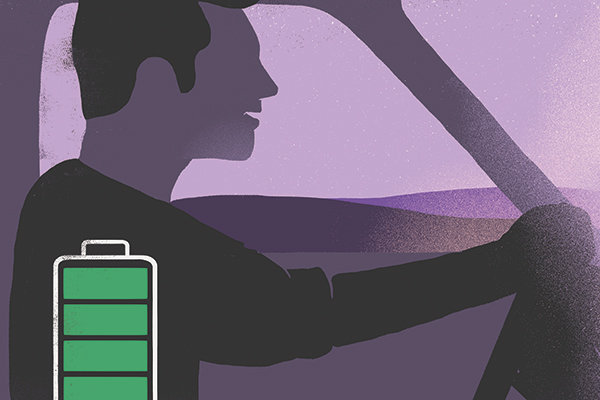
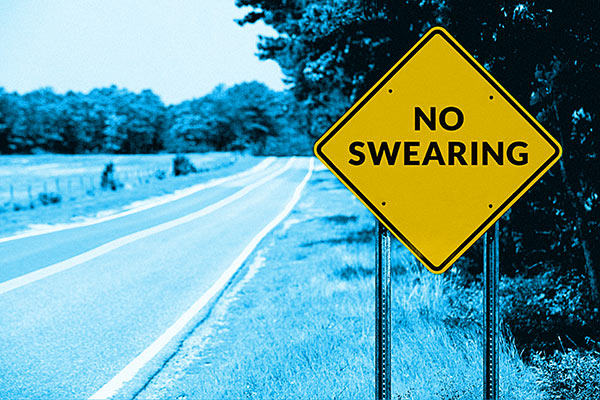
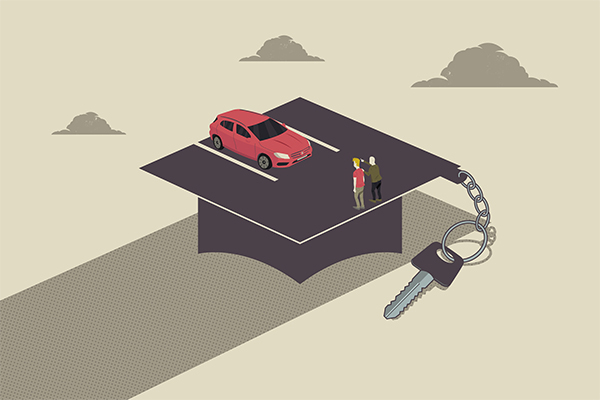
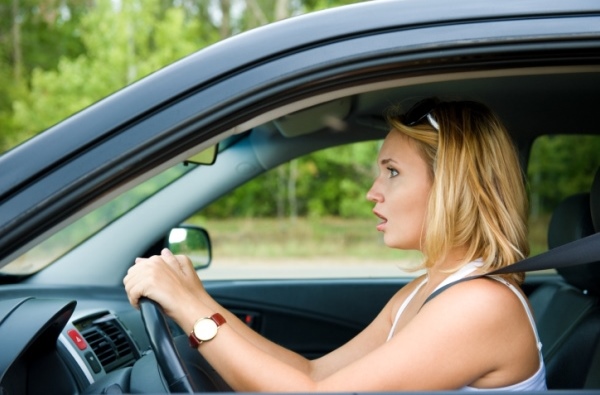
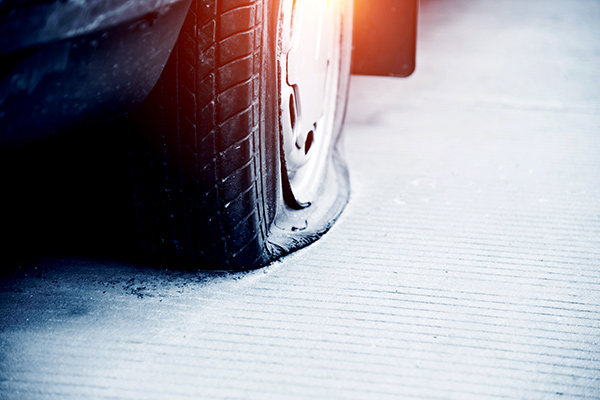

Mark says,
Mandatory seatbelt ‘laws’ are COERCED laws, meaning forced to wear then, NOT voluntarily wear them
These ‘laws’ also violate the Fourth Amendment of the Constitution against unwarranted search and seizure.
Do GEICO or IIHS employee like having snooper trooper look into their car looking for seatbelt usage. Any person with an ounce of common sense would say NO.
Also seatbelt usage does NOT always save lives as propagandizes by highway transportation bureaucrats .
Rick says,
I agree with Mark 100%. Also it restricts a person to drive in a professional matter. They lock up when a driver looks thru a mirror forcing a drive to take other measures to make sure their is not another car on either sides.
Further more I have been driving for over 40 years. I race on tracks or in the streets. When I race I never wear a seat belt or I would not be here to this comment today if I wore a seat belt.
A seat belt should be worn if a person who decides to use it not make the government money. Like Mike Ciccone say since the 80’s start they re-enforce the law but, how many years before that a person can drive without a seat belt and everything was fine. It is not a seat belt that can save you it is a person awareness of their own driving and being aware of other drivers. That is step one in safety driving.
Paul Janssen says,
Huh? When I first started driving (the 1960s) there were a lot fewer cars on the road, a lot fewer idiots to keep an eye on. Despite the fact that I’ve taken the advanced driver education course at the Minnesota Safety Center (or perhaps because of it) I realize that I can not control the actions of other drivers nor can I always avoid the repercussions.
Ramey Zamora says,
Professional race car drivers wear not only seat belts but insanely restrictive harnesses to protect themselves. I don’t believe for a moment you can’t drive perfectly well, within all the laws of this country, while wearing a simple seat belt as our vehicles provide.
If you’re peeved about being MADE/COERCED to use them, then address the lawmakers. Meanwhile, wear those seat belts so you don’t become the very statistic those laws are attempting to reduce,
Thank you.
Lyle says,
The only reason to wear ‘Death Traps’ is because government took away our right to choose, you have the right to kill un born babies, but do not have freedom of choice when it comes to wearing a death trap that kills people. I have many family and friends who would have been dead, and was verified by police and firemen, had they been wearing one, I have seen some who lost their lives because they did have it on. Not everyone falls for the propaganda due to actual experience, but to keep raking in the money by passing unconstitutional laws, they will not report the facts, but continue promoting the lie that it saves lives.
Paul Janssen says,
Ever roll your car. I have. Know why I didn’t break my neck. Three point safety harness. I’d like you to document your claim of cops and EMTs who say that your “many friends and relatives” that would’ve died if they’d been wearing seat belts.
And maybe your friends and relatives should enroll in remedial drivers ed courses.
I’ve driven well in excess of a million miles, had three advanced drivers ed classes. I’m a professional driver. I always wear a harness and anyone who rides in my car wears one as well.
Mark says,
Paul, I survived a rollover on the driver’s’ side – crushed the door frame in. Had the belt been on I would either, not be here or have permanent brain injury (s).
Luz Martinez says,
Always have my seat belt on.
Frank Baltra says,
SEATBELTS KILL – THE TRUE STORY OF THE SEATBELT SCAM
Over the past 46 years the federal government has spent billions of dollars to persuade, and force, the American people to wear seatbelts in automobiles. It has done this without any research, without any basis in fact, without any evidence that wearing a seatbelt improves a person’s chance of survival in an automobile accident. Indeed, research has shown that the opposite is true.
The first seatbelt law was passed in the United States in 1963. This merely required that new cars made after l964 be equipped with seat belts. There was no requirement that people actually use them. When it was first suggested to Henry Ford II that he put seatbelts in new Ford cars, his response was, “That’s the craziest thing I ever heard”. During the hearings held both before and after the passage of these laws, experts from the automobile industry repeatedly warned the members of congress that putting seatbelts in cars was not a good idea. The congress chose to ignore these warnings.
In l966, congress established the National Highway Traffic Safety Administration (NHTSA). In it’s entire 45 year long history, NHTSA has never had a director who knew anything about highway safety. Successive congresses and administrations, both democratic and republican, have used NHTSA to carry out whatever schemes and conclusions they decided upon, and NHTSA’s job has been to promote whatever congress and the administration ordered them to promote, regardless of whatever merit, or lack of merit, it might have had. One of NHTSA’s chief functions, over the years, has been to funnel billions of dollars of federal money to states under various pretexts.
The closest NHTSA ever came to a revolt against congress was during the administration of Raymond K. Peck in the period l980-1982. This is one of the more bizarre stories of history. When Ronald Reagan became president, he asked the leaders of the automobile industry what he could do to help them. They replied, “Get congress to repeal the air bag and seatbelt requirements”. President Reagan then appointed one Raymond K. Peck to be head of NHTSA. Now it so happened that at that time there was a distinguished expert on highway safety by the name of Raymond C. Peck. However, the man Mr. Reagan appointed was not Raymond C. Peck, but Raymond K. Peck, a lawyer for the coal industry. Be that as it may, Mr. Peck went to work to try to persuade congress to repeal the seatbelt and air bag requirement. Unfortunately, he was not successful. Moreover, his efforts led to a lot resentment, bitterness and hard feelings. After two years, Mr. Peck resigned. Some say he was forced out, some say he quit in disgust. Whatever the reason, it was the last time any administration made an effort to get the seatbelt and air bag laws repealed.
After seatbelts were first installed in automobiles, but before laws were passed requiring people to actually use them, a survey done by the automobile industry showed that only 11% of vehicle occupants were actually using these devices. The congress responded, not by recognizing that people did not want these devices and repealing the seatbelt laws, but by passing legislation offering states millions of dollars to pass laws requiring people to use these devices, and ordering NHTSA to use all its powers to lobby states to pass these laws and to engage in propaganda campaigns to persuade the public that seatbelts were a good idea. To help it to carry out these instructions, congress gave NHTSA hundreds of millions of dollars.
In 1984, New York became the first state to pass a law requiring automobile occupants to wear seatbelts. Thereafter, other states, responding to intense pressure from NHTSA, offers of millions of dollars in federal grants if they complied, and threats of losing millions of dollars in federal grants if they refused, caved in one by one until, by the end of l996, all states except New Hampshire had some sort of mandatory seatbelt laws.
Because surveys showed that between 70% and 80% of the public were opposed to laws forcing people to wear seatbelts, most states passed so-called “secondary” seatbelt laws. These laws stated that police could not stop a motorist merely for not wearing a seatbelt but that if the motorist were stopped for some other offense, he could be fined for not wearing a seatbelt. Because some members of congress insisted that motorists be forced to wear seatbelts, NHTSA adopted a policy which they call “gradualism”. This means that they would settle for whatever a state legislature was willing to give them and then come back every year and ask for more. Thus, they have been successful, over the years, in getting more than half the states to change their seatbelt laws from secondary to primary, meaning that the police can stop a motorist merely for not wearing a seatbelt in those states.
In order to carry out the wishes of congress, NHTSA has built up a huge, nationwide lobbying organization. This consists not merely of the employees of NHTSA, but of numerous organizations controlled, and even created, by NHTSA to lobby states to pass ever more draconian seatbelt laws and to spread seatbelt propaganda. Among these are MADD (formerly known as Mothers Against Drunk Driving), “Buckle-Up America”, the so-called “Seatbelt and Air Bag Campaign of the National Safety Council”, and many others. In addition, NHTSA has effectively taken control of nearly all of the automobile safety organizations in this country by the simple expedient of subsidizing their budgets. In a particularly clever ploy, in accordance with the wishes of congress, NHTSA has seen to it that most of the seatbelt grant money goes to police departments, highway departments, and public health departments, thus giving these departments a vested interest in promoting seatbelt use and seatbelt laws.
In 23 USC 153 we read:
(a) Authority To Make Grants. – The Secretary may make grants to
a State in a fiscal year in accordance with this section if the
State has in effect in such fiscal year –
(1) a law which makes unlawful throughout the State the
operation of a motorcycle if any individual on the motorcycle is
not wearing a motorcycle helmet; and
(2) a law which makes unlawful throughout the State the
operation of a passenger vehicle whenever an individual in a
front seat of the vehicle (other than a child who is secured in a
child restraint system) does not have a safety belt properly
fastened about the individual’s body.
(b) Use of Grants. – A grant made to a State under this section
shall be used to adopt and implement a traffic safety program to
carry out the following purposes:
(1) Education. – To educate the public about motorcycle and
passenger vehicle safety and motorcycle helmet, safety belt, and
child restraint system use and to involve public health education
agencies and other related agencies in these efforts.
(2) Training. – To train law enforcement officers in the
enforcement of State laws described in subsection (a).
(3) Monitoring. – To monitor the rate of compliance with State
laws described in subsection (a).
(4) Enforcement. – To enforce State laws described in
subsection (a).
Notice that these politicians, who didn’t have the vaguest idea what they were talking about, and were under all kinds of misapprehensions, had the arrogance to speak of “educating the public”, offering huge bribes of taxpayer money to states to impose their mistaken ideas on the public by propaganda and coercion.
Under 23 USC 406, which has now been repealed, NHTSA got $124.5 million dollars a year to give to states which achieve an 85% seatbelt use rate or pass a primary seatbelt law. Police departments, in particular, stood to lose millions of dollars if their state failed to achieve these goals. In addition, states can qualify for hundreds of millions of additional federal dollars under 23 USC 402 and 405 by, among other things, promoting seatbelt use (over $200 million a year under section 402 and $25 million a year under section 405).
In order to justify the expenditure of these funds, congress has enshrined into federal law the most absurd falsehoods. Thus, in 23 USC 402 we read, “Each state shall have a highway safety program…designed to reduce traffic accidents and deaths, injuries and property damage resulting therefrom. Such programs shall include programs to…encourage the use of occupant protection devices (including the use of safety belts and child restraint systems) by occupants of motor vehicles and to increase public awareness of the benefit of motor vehicles equipped with air bags”. Congress was repeatedly warned by experts from the automobile industry, over a period of twenty years, (from 1962 to 1982), that seatbelts and air bags were dangerous, impractical devices which would do more harm than good. After air bags were installed in automobiles, in accordance with the mandate of congress, so many people were killed by them that, in 2005, congress deleted the words “to increase public awareness of the benefits of motor vehicles equipped with air bags” from 23 USC 402. In addition, in what is now starting to resemble a play by Harold Pinter, NHTSA revised FMVSS 208 (Federal Motor Vehicle Safety Standard 208) to require that a notice be posted on all cars equipped with airbags, warning occupants of the dangers of these devices, which are there because congress ordered them to be put there in the first place!
In 23 USC 405 we read, “..the Secretary (of Transportation) shall make grants…to states that adopt and implement effective programs to reduce highway deaths and injuries resulting from individuals riding unrestrained or improperly restrained in motor vehicles”. As experts from the automobile industry warned, and as research has shown, restraints (seatbelts) increase, not decrease, the chance of an individual being killed or severely injured in an automobile accident. The implicit assumption contained in the statement, that highway deaths and injuries result from people not wearing seatbelts, is totally and demonstrably false. Yet that is the law of the land.
In 23 USC 157 we read: “…(6) Savings to the federal government. The term “savings to the federal government” means the amount of Federal budget savings relating to federal medical costs (including savings under the medicare and medicaid programs under titles XIII and XIX of the Social Security Act (42 US 1395 et seq.), as determined by the secretary”. This pseudolegalistic nonsense was supposed to convince you that that forcing seatbelts on the public was going to save the Social Security System money! Apparently congress thought better of it, because they took this paragraph out in subsequent versions of the law.
The case for seatbelts in automobiles was based on five false assumptions, something congress could easily have discovered before passing this legislation if they had bothered to ask the experts or, indeed, if they had merely listened to the experts, for the experts did try to tell them. They not only did not ask, they turned a deaf ear when they were told. As a result, thousands have died.
The five false assumptions were these:
1. Most people who are killed in automobile accidents are killed in head-on collisions. In fact, according to the government’s own data, fewer than two percent of all collisions are head-on collisions and fewer than 14% of all fatal collisions are head-on collisions.
2. People are killed in head-on collisions by being thrown through the windshield. In fact, according to the latest available government data, of the 36,281 vehicle occupants who were killed in 2001 (the last year for which the government listed head-on collisions as a separate category) only 145 were “thrown through the windshield”.
3. Vehicle occupants would be saved if they were prevented from being thrown through the windshield by wearing a seatbelt. In fact, if the force on the occupant is sufficiently great to throw him through the windshield, the injury inflicted on the wearer by the seatbelt itself would be enough to kill him.
4. The passenger compartment is never stove in in fatal collisions. In fact, the overwhelming majority of motorists who are killed in fatal collisions are killed by being crushed to death when the passenger compartment is stove in. The seatbelt acts like an anvil, holding the occupant in place as he is being crushed to death.
5. The seatbelt itself will not injure the wearer. In fact, in a head-on collision as low as 30 miles per hour with one foot of crush, the seatbelt will exert a force on the wearer of 30 times his body weight, i.e., enough to kill him. The fact that the seatbelt itself might injure the wearer never occurred to them. The seatbelt proponents had never heard of Newton’s second law of motion!
The key question, what is the effect of seatbelts on people in other types of accidents, was not considered.
After motorists were first required to use seatbelts, reports began to come in from emergency rooms that people were being killed by seatbelts. Instead of heeding these reports and repealing the seatbelt laws, congress put forward the theory that it was merely a mistake in seatbelt design, and ordered the addition of shoulder belts to seatbelts. This resulted in an increase in seatbelt fatalities, as motorists were now being killed by their shoulder belts as well as by their lap belts.
When it became clear that seatbelts were not effective in preventing fatalities in head-on collisions, NHTSA, in line with its continuing mandate to promote seatbelts, put forward the theory that they would prevent people from being killed in roll-overs. Quite apart from the fact that most people couldn’t roll their cars over if they tried, it turned out that most people who were killed in roll-overs were killed by being crushed when the roof caved in. The best chance of survival in such a case is to duck down, jump clear or be thrown clear, all of which are prevented by a seatbelt. The effect of seatbelts in roll-overs was thus to increase, not decrease, the number of fatalities.
NHTSA then put forward the theory that seatbelts would save people from being killed by preventing them from being ejected. For a person to be ejected from a vehicle in an accident requires an unusual collision or roll-over of extreme violence, in which case the vehicle is usually so badly crushed that anyone trapped in the vehicle by a seatbelt would be almost sure to be killed. We know from actual accident reports that a person has a better chance of surviving such an accident if he is ejected than if he is trapped in the vehicle. There is nothing new or mysterious about this. Anyone who has seen an old western movie has probably seen the scene where two locomotives are about to collide. The engineer and the fireman do not fasten their seatbelts in such a case; they jump clear to save their lives. Yet locomotives are far more resistant to crush than automobiles.
In line with the mandate of congress, NHTSA continues to lobby states to pass primary seatbelt laws. One of the ways they do this is to stage what we call “The Show” for state legislative committees considering seatbelt bills. How many of the cast show up at a particular hearing tends to vary from state to state and year to year. The cast usually consists of the head of the state police department, the head of the state department of transportation, the head of the public health department (or their subordinates), the local representative of MADD (a wholly owned subsidiary of NHTSA) a lady variously described as a “mother” or “home maker”, someone claiming to be the relative of an accident victim, and possibly one or two other people, variously described as a “child advocate” or “safety advocate”, all reading from a script supplied to them by NHTSA. The testimony is a clever mixture of false, misleading, emotional and irrelevant statements. Someone usually tells a tearful story about how a relative got killed in an automobile accident and therefore the legislature should force people to wear seatbelts. The hope is that this non-sequitur will not be questioned. You are supposed to jump to the conclusion that the relative would have been saved if he had been wearing a seatbelt, even though there is not a single verified case of a person’s life ever being saved by a seatbelt in an automobile accident.
I wear my belt because I have to.
Frank Baltra says,
I lived in Miami Fl. for some time and one day along a two lane highway there was a accident, the car went off the Rd and into a canal along the road. The driver of another car got out and jumped into the canal to see if he can get the driver out before the car went completely under.
As he got the door open the car did submerge with the driver in it. Well the guy that jumped in was getting out of the canal and was overheard to say, “If only I had a knife. He could not get the seat belt open. The women in the car drowned.
Paul Janssen says,
I carry an all-in-one tool that has a window hammer and a real sharp belt cutter. My daughter said perhaps I’d better not drive into the river. And I know that but just in case…
Mark says,
I decided after my 2004 rollover to carry a baseball bat in case I need to escape my overturned car. I have yet to use for that purpose. it is also a good defensive weapon should I need to use as such. I have also a crow-bar for the same purposes.
Plus I carry a fire extinguisher in the event I need to use it.
Frank Baltra says,
I remember being in Tallahassee Florida for a political event about 4 years ago. The Florida Highway Patrol had their antique patrol car there , I asked the officer that was showing it, where was it’s seat belt, he said that they where going to install it when they got back to the garage. I said to him “Boy, you had that answer ready real quick didn’t you?”.
P. B. says,
Never wore a seatbelt in my life and will not start now. I have been giver a ticket for not having it on and told the officer if he was there in about 30 minutes, I will be coming back this way and I still will not have it on. The officer could not believe that I was being so honest, and I told him I am not going to lie to you. I have seen to many accidents where people were trapped in their cars because of the seat belt would not release.
Shirley says,
I wouldn`t leave home without it!
Mark says,
Like American Express.
MAQBOOL. A. BOKHARI says,
I feel more secured with Safety Belt on while driving – ANOTHER WORST ISSUE that has
CROPPED UP very common on the road i.e.TEXTING & BUSY ON PHONE WHILE DRIVING Motor Vehicle Department around U.S. should take up this matter VERY SERIOUSLY – There
should be HEAVY PENALTY on the careless drivers driving with such an ATTITUDE – they are endangering the lives of peaceful & traffic law abiding law of the Country – Hope my sincere
REQUEST/SUGGESTION will be HONORED – Appreciate – Best Regards
Teena says,
I am with you on the issue of distracted driving. I wear the seat belt so no officer has not reason to approach me. I can’t count how many times I pull up to a light and see someone texting, or checking for directions on the GPS, when they should be watching on coming traffic. Or they must tweet or respond to a tweet right at that moment. Really!!! Even with the computer screen in the middle of the dash people can’t see them and their heads are turned to the right checking the screen. Distracted driving is much more of a problem than not wearing your seat belt. I just being forced to do something.
Mark says,
I have the center screen in my 2014 Escape. It has certain parts of it that are disabled while moving. The phone part is not one of them.
Arturo Sosa says,
Thank you for this report, very helpful to everyone at home.
Mike Arias says,
Very educational article on the inception and the development of the seat belts which undoubtedly help to save an estimated 12,000 to 15,000 per year. If more motorists and their passengers would wear them each and every time they travel on a public roadway the aforementioned numbers cited would increase which is in everyones public safety vested interests as well reduce the overcrowding conditions that are existing in the hospital ER. Seat belts would also help to reduce medical taxpayer costs for motorists many of which are either underinsured or not insured.
Always fasten those Seat Belts since they help to Save Lives on the public roadways, drive defensively and Be safe !
Stan says,
Amazing how many people still don’t buckle up. Most of the fatal and severe injury accidents in my area are people who aren’t wearing seatbelts.
I’ve worn seatbelts since 1979, and anybody driving with me also has to buckle up. I don’t start the car until they put their seatbelt on. If they don’t, they can walk.
kevin palin says,
You do realize that seat belts cause injuries . Yes they keep you from bring tossed around inside the vehicle which reduces cosmetic injuries and broken bones . But they lock you into the seat causing your body to absorb all of that force. These hidden injuries that can’t be seen on modern medical test. That’s why people suffer from these hidden injuries that don’t show up till later. Thats why insurance companies make you go to the doctor right away so they can get out of paying. In the state of Florida you can choose whether you wear a motorcycle helmet which protects you the minute you put it on. A seat belt however is a constant irritation and only serves you in an accident. We should be able to chose how we get injured not forced to wear something that may or may not help.
Scott Sardonicus says,
Seat belts have been shown to decrease injury and fatality in high speed crashes. I would be dead if I was wearing one when my car crashed at about 65 mph. There are exceptions to the rule. We need the freedom to choose.
Most crashes are low speed and the primary impact of seat belts at low speeds is to increase the incidence of whiplash as they restrict the amount of spine available to absorb the shock wave. Additionally, shoulder straps induce a torque to the spine.
Gina says,
Safety first